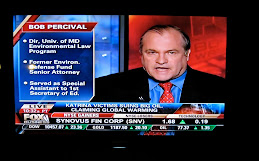A Brazilian judge has ruled that the Brazilian multinational mining company Vale SA shares liability for the catastrophic tailings spill from a collapsed storage dam operated by Samarco Mineracao SA, a joint venture between Vale and BHP Billiton Ltd. Judge Marcelo Aguiar Machado found that Vale’s contract to dump tailings into the storage impoundment “is sufficient to lay the foundation for the claim that Vale should be considered a direct polluter and, in this quality, responsible for the environmental damage. The November 5th collapse unleashed “an avalanche of mud that killed 19 people, destroyed several villages, polluted hundreds of miles of rivers and left a reddish plume in the Atlantic Ocean so vast it was visible from space more than a month later.” Paul Kiernan, Miner Vale Shares Liability in Dam Break, Judge Rules, Wall Street Journal, Dec. 21, 2015. The judge ordered Vale to pay $500 million within 30 days to fund initial cleanup or pay daily fines.
Major cities in Italy - Milan and Rome - have imposed restrictions on vehicle use because of record levels of air pollution. Unusually mild and dry weather and the absence of wind has contributed to a buildup of high levels of particulates and nitrogen dioxide. Motor vehicles and home heating systems that are largely unregulated are two of the primary sources of the pollution. Gaia Pianigiani, Italy, Dirty Air at Record Levels, Is Putting Limits on Traffic, N.Y. Times, Dec. 24, 2015. The reactors are expected to return to service in late January.
On December 24 a Japanese court approved the restart of two more nuclear reactors that had been shut down in the wake of the 2011 Fukushima Daiichi disaster. The reactors, which are owned by Kansai Electric Power, are located in the western city of Takahama. The Fukui District Court lifted an injunction after determining that the plant operators had complied with new regulations by Japan’s Nuclear Regulation Authority. The first of the reactors is expected to return to operation in late January 2016.
On December 23 the editors of the Wall Street Journal published an editorial praising Congress for cutting the EPA budget. “Brushing Back a Lawless EPA,” Wall St. J., Dec. 23, 2015. The editors noted that the omnibus budget bill funded EPA at a level of $8.1 billion, $451 million less than President Obama had requested. It noted that EPA now has only 15,000 employees, down from 17,000 at the start of the Obama administration and the lowest level since 1989. It decried the lack of policy riders to block EPA action, save for one barring EPA from regulating livestock emissions of greenhouse gases (GHGs). EPA opponents in Congress did try to use the Congressional Review Act (CRA) to veto EPA regulations to limit GHG emissions from power plants. The CRA creates a special fast-track procedure permitting an up-or-down vote in each house of Congress. On Nov. 17, 2015, the U.S. Senate passed a joint resolution of disapproval of EPA’s new source performance standard by a vote of 52-46 with only three Democrats supporting the resolution and three Republicans voting against it. The disapproval resolution was adopted by the House by a vote of 235-188 on Dec. 1, 2015, even as the Paris climate negotiations were taking place. Only four Democrats supported the resolution, while 10 Republicans voted against it. A resolution disapproving EPA’s GHG regulations for existing power plants passed the Senate on Nov. 17, 2015 by a vote of 52-46. The resolution passed the House by a vote of 242-180 on Dec. 1, 2015. This all turned out to be political theater because, as promised, President Obama vetoed both joint resolutions of disapproval on Dec. 18, 2015. As a result, the regulations remain in effect.

















